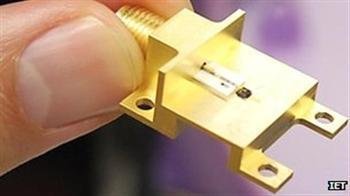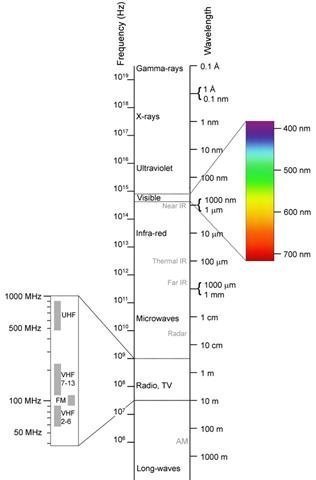Published by on
A team of scientists from the Tokyo Institute of Technology (Tokyo Institute of Technology) are testing the ability of the data transfer Wi-Fi at the threshold of a new band, called a T-ray. The threshold of this new band is in one of far-infrared (far-infrared) to microwave (microwave), is yet to be defined by any standard media.
|
The level of the electromagnetic spectrum. |
Despite the name T-ray group band not only operate at THz frequencies of GHz and still be the "lower". T-ray is expected that Wi-Fi will work for about 300 GHz - 3 THz.
At THz frequencies caused concerns about radiation and radiation safety. Because THz waves have strong penetration through many materials, they are used in imaging techniques. Penetration is similar to X-ray but with longer wavelengths so energy levels (bad) material accumulates on the lower.

The device can significantly boost the operating frequency of the generator.
Previously, in the THz frequency as Wi-Fi is expensive, power consumption and low efficiency. The reason is that the power required for these devices cumbersome and complex, not suitable for small and medium networks. Song Tokyo research institute with a new device allows theoretically Wi-Fi T-ray becomes more realistic. This device is called resonant tunneling diode (Resonant tunneling diode - RTD), with a size of about 1 mm2. Notable feature of the RTD is that it allows to reduce voltage but increased current density flowing through. By combining resonance with many other devices, RTD helps the T-ray broadcast becomes easier.
Preliminary studies of the Tokyo Institute showed that T-ray gain Wi-Fi bandwidth 3Gb / s at a frequency of 542 GHz, ie 20 times faster than the existing standard Wi-Fi. But that's not the destination of Japanese scientists. In theory they hope to reach 100 Gb / s in 10-meter radius found.
(The Mask / BBC)

